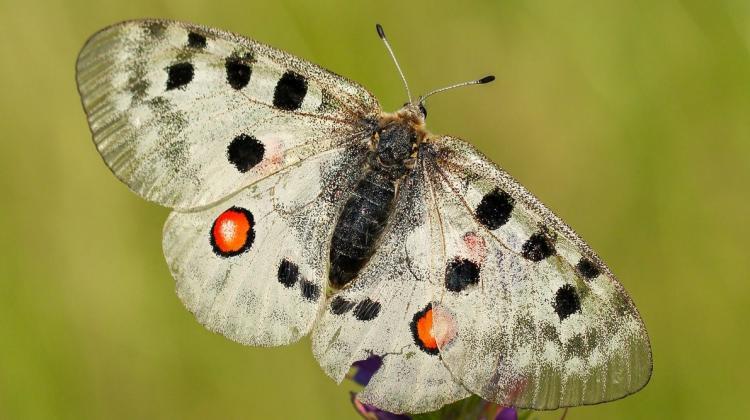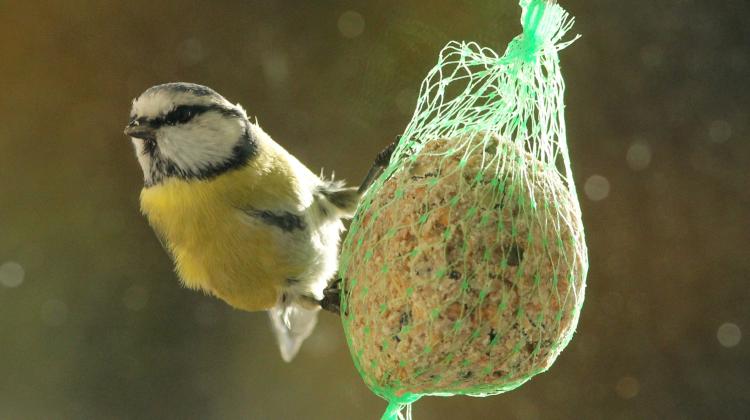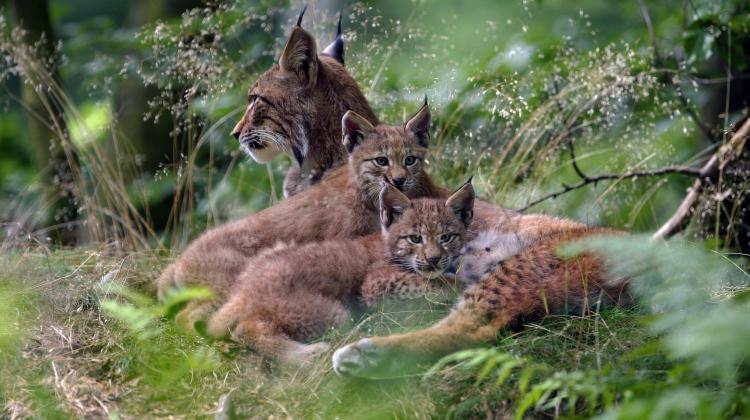300 Apollo butterflies released in Krucze Mountains as part the species reintroduction
 Photo: Fotolia
Photo: Fotolia
300 butterflies of the Apollo species from the Karkonosze National Park breeding have been released in the Kruczy Kamień Reserve in the Krucze Mountains. The project to rebuild this species, which went completely extinct in the Sudetes in the nineteenth century, will continue for 10 more years.
The Apollo is one of the largest day butterflies occurring in Poland and an extremely endangered species. For more than two centuries, its range and numbers in Poland have been rapidly declining, and in the Sudetes this butterfly went completely extinct in the 19th century.
Dariusz Kuś, chief nature protection specialist at the Karkonosze National Park told PAP that last week the park employees released 300 Apollo butterflies (150 females and 150 males) in the Kruczy Kamień Reserve in the Kamienna Góra Forest District.
In the 1990s, an attempt was made to reintroduce Apollo in the Krucza Valley in the Krucze Mountains, where they persisted for several seasons. "In this region, this species was last seen around 2004-2005, but it is assumed that in the Karkonosze the species subsided approximately 100 years ago" - explained Kuś.
He explained that two unfavourable factors had contributed to this. "On the one hand, collecting was very popular. Each Apollo butterfly is different, they are very visually appealing, easy to catch, so they were harvested en masse. The second reason was the change of habitats, when the economy declined, the habitats shrunk" - he pointed out.
Restoration of Apollo populations began three years ago in Jagniątków, in the Live Gene Bank of the Karkonosze National Park. Earlier, while waiting for the first specimens, the park employees were preparing to work with Apollo butterflies, reproducing host plants and preparing appropriate infrastructure.
"We received butterflies for breeding three years ago from Jerzy Budzik, the best specialist in Poland who has been dealing with this species for over a decade. We have learnt everything from him, including how to run a breeding station" - said Kuś.
"In 2016, we obtained about 350 eggs, of which we were able to obtain 34 butterflies. They laid over 2,000 eggs, thanks to which in the second year we had more than 500 butterflies. They laid over 5,000 eggs. This year, we obtained more than a thousand butterflies from those eggs, which gave us about 10,000 eggs" - he explained.
He said that due to the large number of new individuals, the park employees could release the "surplus". The first Apollo caterpillars were released over a month ago at Chojnik in the Karkonosze Mountains. "We have a reserve, a pool of individuals, which will allows us to keep breeding in the next years, and any surplus will be gradually released into natural sites that are well prepared at this point" - the naturalist noted.
He pointed out that the reserve in Kruczy Kamień, supervised by the employees of the Kamienna Góra Forest Inspectorate, was an ideal place to live this species, also due to the abundance of host plants. At the foot of the reserve there is also a complex of flowery meadows providing nectar for butterflies.
"We still have a lot of work ahead of us, because for a wild population to be created there, it will have to be supplied with butterflies from the nursery and skilfully monitored to determine when wild butterflies no longer need our help" - explained Kuś and added that this process would take at least ten years. He also noted that naturalists wanted to reconstruct Apollo populations not only at two sites, but throughout the entire Lower Silesia. "If there are more sites of this butterfly, then it has a better chance to persist, because it will be able to migrate between these sites" - he pointed out.
According to Kuś, next year naturalists will have to mark butterflies to estimate how many wild individuals have survived from the first reintroduction. "Due to the fact that this year the butterflies were released for the first time, there was no need to mark them. Apollo has good wings for this, you can write on them with a pen, there are no scales on the wings, so touching it does not cause any changes in coloration" - he explained.
Kuś pointed out that the Apollo is a species that is very attractive visually and not very skittish. "It`s an umbrella species: by protecting the Apollo and performing various activities aimed at improving its habitat, we protect the entire spectrum of other species" - he explained.
PAP - Science in Poland, Agata Tomczyńska
ato/ ekr/ kap/
tr. RL
Przed dodaniem komentarza prosimy o zapoznanie z Regulaminem forum serwisu Nauka w Polsce.


















